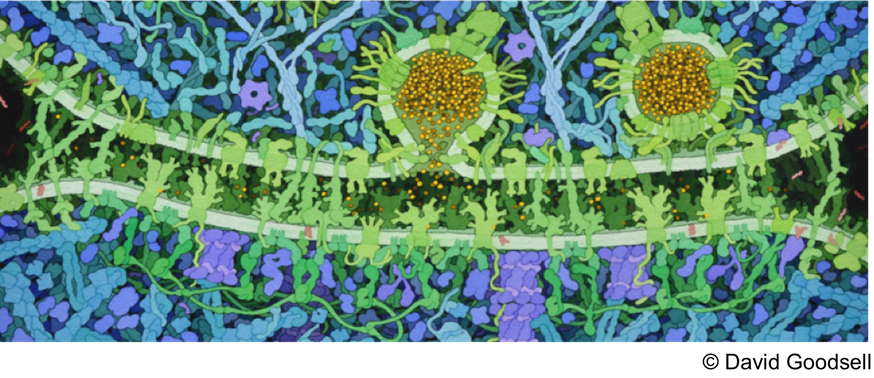The Cystic Fibrosis Transmembrane conductance Regulator (CFTR) protein is a particular member of the ABC transporter family. In fact, it is the only known member of this family that functions as an anion channel, mediating the transport of chloride and bicarbonate across the apical membranes of epithelial cells. As CFTR mutations lead to the inherited disease Cystic Fibrosis (CF), it represents an important target for drug discovery, with challenging issues related to the development of modulators specific for each class of mutations.
Structurally, CFTR contains two membrane spanning domains (MSDs) that form the anion conduction pathway and two cytoplasmic nucleotide-binding domains (NBDs) that bind and eventually hydrolyze ATP. A large regulatory (R) domain connects the two halves of the protein and plays an important role in regulating the channel activity.
In the absence of experimental 3D structures at atomic resolution for the entire CFTR protein, our group has built models of this protein, which had provided noteworthy insights into its specific structural and functional features (Mornon et al., 2015). Molecular dynamics simulations revealed significant conformational changes resulting in a full open channel, accessible through lateral tunnels from the cytosol. In a second step, this first stable full open conformation evolved towards another stable state, in which only a limited displacement of the upper part of the transmembrane helices leads to a closure of the channel. The relevance of these models was clearly confirmed by numerous experimental studies, including very recent cryo-electron microscopy data (Zhang and Chen, 2016).
Currently, we set up a metadynamics approach for a better sampling of CFTR transition conformations that are taking place during the gating cycle in absence or presence of mutations/modulators. In this context, we built a consistent model of the full CFTR protein, including flexible N- and C-terminal regions and the regulatory (R) domain. This latter includes post-translational modifications (phosphorylations) known to be involved in the regulation of CFTR activity. These studies are required to improve our understanding of i) the impact of mutations on the dynamics of CFTR and ii) the mechanisms of action of modulators. Forward, this work will be very useful, in combination with experimental data, for designing new therapeutic strategies.
This work was supported by the Association Vaincre La Mucoviscidose (Paris, France).

 PDF version
PDF version
